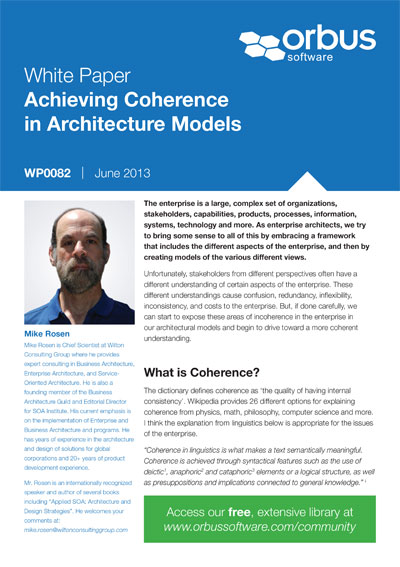A paper explaining ways in which areas of incoherence in the enterprise can be exposed in architectural models.
The enterprise is a large, complex set of organizations, stakeholders, capabilities, products, processes, information, systems, technology and more. As enterprise architects, we try to bring some sense to all of this by embracing a framework that includes the different aspects of the enterprise, and then by creating models of the various different views.
Unfortunately, stakeholders from different perspectives often have a different understanding of certain aspects of the enterprise. These different understandings cause confusion, redundancy, inflexibility, inconsistency, and costs to the enterprise. But, if done carefully, we can start to expose these areas of incoherence in the enterprise in our architectural models and begin to drive toward a more coherent understanding.
What is Coherence?
The dictionary defines coherence as ‘the quality of having internal consistency’. Wikipedia provides 26 different options for explaining coherence from physics, math, philosophy, computer science and more. I think the explanation from linguistics below is appropriate for the issues of the enterprise.
“Coherence in linguistics is what makes a text semantically meaningful. Coherence is achieved through syntactical features such as the use of deictic1 , anaphoric2 and cataphoric3 elements or a logical structure, as well as presuppositions and implications connected to general knowledge.”
So what does it all mean? Continue reading this ebook from Mike Rosen to understand about coherence in architecture models.
